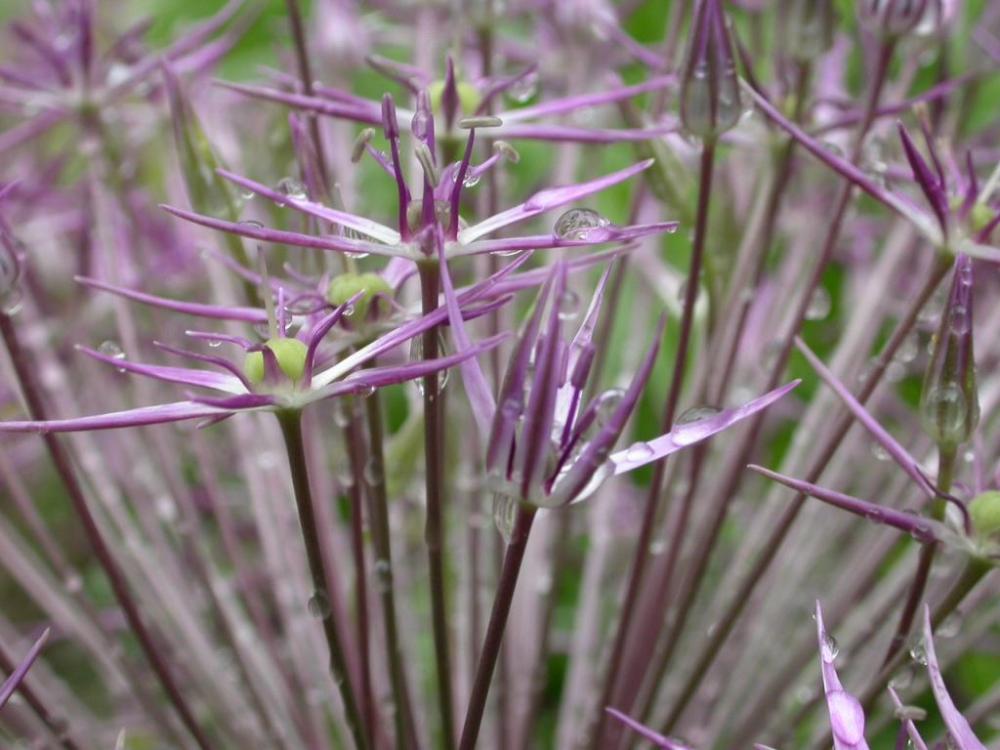Water Quality
Everywhere you look new plant material is being offered; even the local garden centres and Big Box stores are in on the parade. All very good, but a fair number of these plants have either unknown cultural requirements, or perhaps worse, are "sensitive". Well there are steps one can take to provide for a plant's needs. First among them is a proper crevice garden that does not impede water movement and helps to moderate soil conditions.
Numerous articles have been written on cultural conditions; such discussions typically are given on: soil types, soil structure and aerobic capacity, soil moisture, soil temperature, soil fertility and the presence or absence of organic matter, soil pH (acidity/ alkalinity), timing of fertilizer application. One topic rarely considered is water quality - with regards to chemical composition rather than microbial content. Sometimes it is obliquely regarded in discussions on acid rain.
Water sources vary widely as to their dissolved content (soluble salts). Pure water has no salts and the pH's neutral (7). Electrical conductivity (used as a rough measure of dissolved salts) is extremely low. As rain falls it absorbs CO2 (carbon dioxide) making it slightly acidic (about 5.5). Generally speaking, rainwater is quite pure; its slightly acidic nature enhances nutrient absorption for plants.
The absorption of nutrients, whether the major elements [nitrogen (N), phosphorous (P), potassium (K)] or the minor elements [calcium (Ca), magnesium (Mg), iron (Fe)], is affected by the amount of soluble salts already in the water. An imbalance of one element may interfere with the amount of the other nutrients that can be absorbed.
Generally speaking, the cleaner the water is, the better its ability to move nutrients into the plant roots; hence, the efficiency of rainwater.
Significantly, NaCl (common salt) so necessary for animal health is not tolerated by most terrestrial plants. The sodium (Na) ion interferes with the uptake of potassium, calcium and magnesium, causing the plant to actually starve for lack of these minerals. Chlorine (Cl) ion will cause leaf and root burn as the plant expels it by moving it to its extreme edges. Chlorine that is added to municipal water can cause this effect also; but, such chlorine is volatile and will evaporate if water is left in a vessel for a day. Not so for Cl (as found in common salt NaCl); it will persist and accumulate in the soil with constant use of water so contaminated.
A good point to note is that animal manure, especially "fresh manure", can contain high levels of salts including NaCl. Older, leached matter is much safer, but levels are variable.
Okay so perhaps the water is relatively good with a low salt content, but the pH is moderately alkaline i.e. above pH 8. There are two possible solutions to lower the pH:
- Use a low level of an acid-forming type of fertilizer when you irrigate.
With a pH metre, adjust the acidity level of the water to between 5.5-6.5 by adding acid. - If you grow acidophillic plants such as most ericaceae, then you must make sure the pH of the water is 6.5 or less, otherwise grow only calciphillic plants.

In summary, the composition and concentration of dissolved salts together with the pH of the water, determines its quality for irrigation. Frequent use of water in a dry summer will cause salts to accumulate and may significantly alter the pH of the soil. Container gardens are very susceptible to this phenomenon due to the small volume of soil. Use of rainwater (or its equivalent) is imperative for trough gardens.
Composition of water varies widely across the continent. The only certain way to know its composition is to have a thorough lab analysis done. Once the hard facts and numbers are known, appropriate measures can be taken to correct any problems. Growing more sensitive plants may entail either treatment of the existing water or resort to a new source. In any case success will be on a surer footing.
(2001 Catalogue Introduction)

Comments (0)
Add new comment